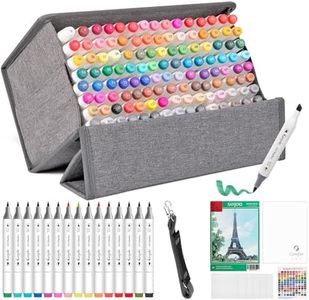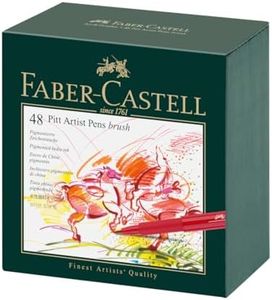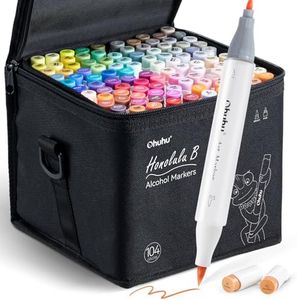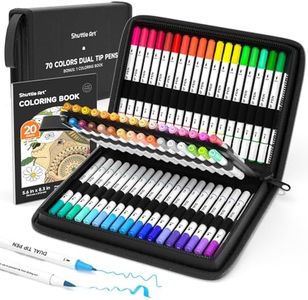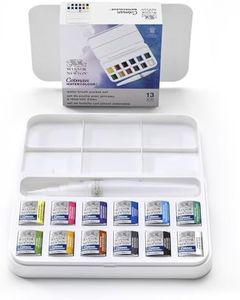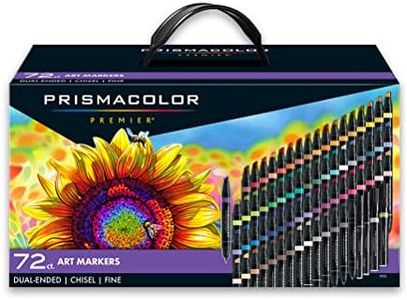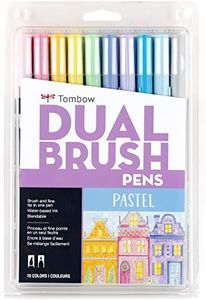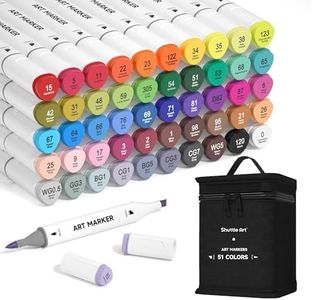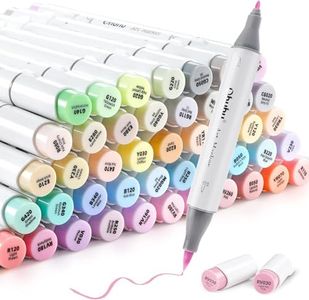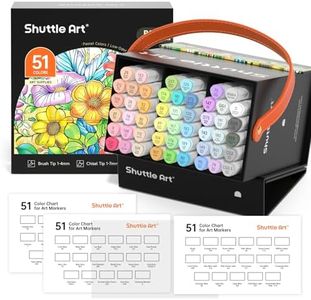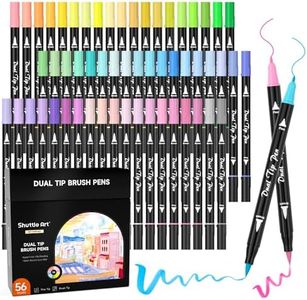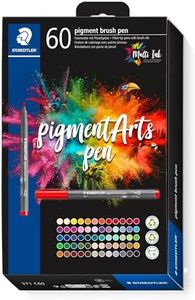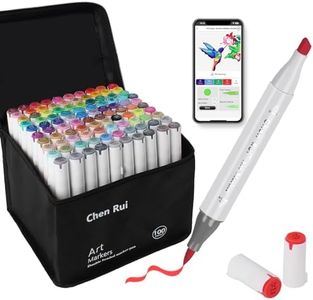We Use CookiesWe use cookies to enhance the security, performance,
functionality and for analytical and promotional activities. By continuing to browse this site you
are agreeing to our privacy policy
10 Best Brush Tip Markers
From leading brands and best sellers available on the web.Buying Guide for the Best Brush Tip Markers
When choosing brush-tip markers, your main goal is to match the marker features to your art style and preferred use. Brush-tip markers are popular among artists, calligraphers, and hobbyists because they mimic the flexibility of a paintbrush combined with the convenience of a pen. The right choice depends on what you plan to do—detailed illustrations, lettering, coloring, or something else. It's important to look at the characteristics of the markers to ensure they suit your needs, whether that's for blending colors in artwork, making smooth calligraphy strokes, or just casual doodling.Tip FlexibilityTip flexibility refers to how much the brush tip bends or responds to pressure. This is important because it affects your control over line thickness and overall comfort during use. Softer tips can create a wide range of line variations but may be harder to control for beginners, making them best for expressive strokes and artwork that requires shading. Firmer tips give more predictable lines, which is helpful for precise lettering or outlining. If you're an absolute beginner, start with a medium-firm tip to get used to the feel, then choose softer tips as you become more confident.
Ink TypeInk type refers to what the marker is filled with, and this affects blending, drying time, and permanence. Water-based inks are easy to blend and great for layering colors, plus they're generally non-toxic and easy to clean up, making them ideal for casual art and young users. Alcohol-based inks dry quickly, blend smoothly, and deliver vibrant colors that don't bleed as much once dry, preferred by professional artists for their saturation and seamless blending abilities. If you plan to do a lot of blending or want bold, lasting colors, go for alcohol-based. For general crafts or safe use with kids, water-based is the way to go.
Color RangeColor range means how many different colors are available in the set. This is important because it limits or expands your creative possibilities—more colors give you the ability to shade, blend, and detail your work. Sets with a small selection (such as 6–12 shades) are good for beginners or those with limited space. Medium sets (24–36) offer a balance and are suitable for most hobbyists. Extensive sets (48 or more) are great for serious artists who want a wide palette for detailed and colorful work. Think about the type of projects you enjoy: if you love experimenting with colors, you'll want a larger set.
BlendabilityBlendability is how well two or more marker colors mix on paper. Good blendability allows for smooth color transitions and gradients, which is key in illustration and hand lettering. Markers with dual tips or designed for blending (like having a colorless blender marker) usually make this easier. If you want to do advanced shading or coloring, seek out markers known for high blendability. For simple drawing or bold lines, this might be less critical.
LightfastnessLightfastness refers to how well the colors resist fading when exposed to light over time. This is important if you plan to display your artwork or keep it for years, as low lightfastness can cause colors to fade quickly. If longevity isn't a concern (for practice or disposable projects), lightfastness might not matter. However, for gifts, displays, or professional work, check for lightfast markers to ensure your creations stay vibrant.
Paper CompatibilityPaper compatibility means how well the marker works with different types of paper—some markers may bleed through thin pages, feather at the edges, or not blend smoothly. If you normally use sketchbooks, journals, or specific cardstock, consider how the marker performs on those surfaces. Thicker, marker-specific papers handle heavy inks best for art and blending, while regular paper might suffice for casual doodling. Test on your usual paper to confirm.
